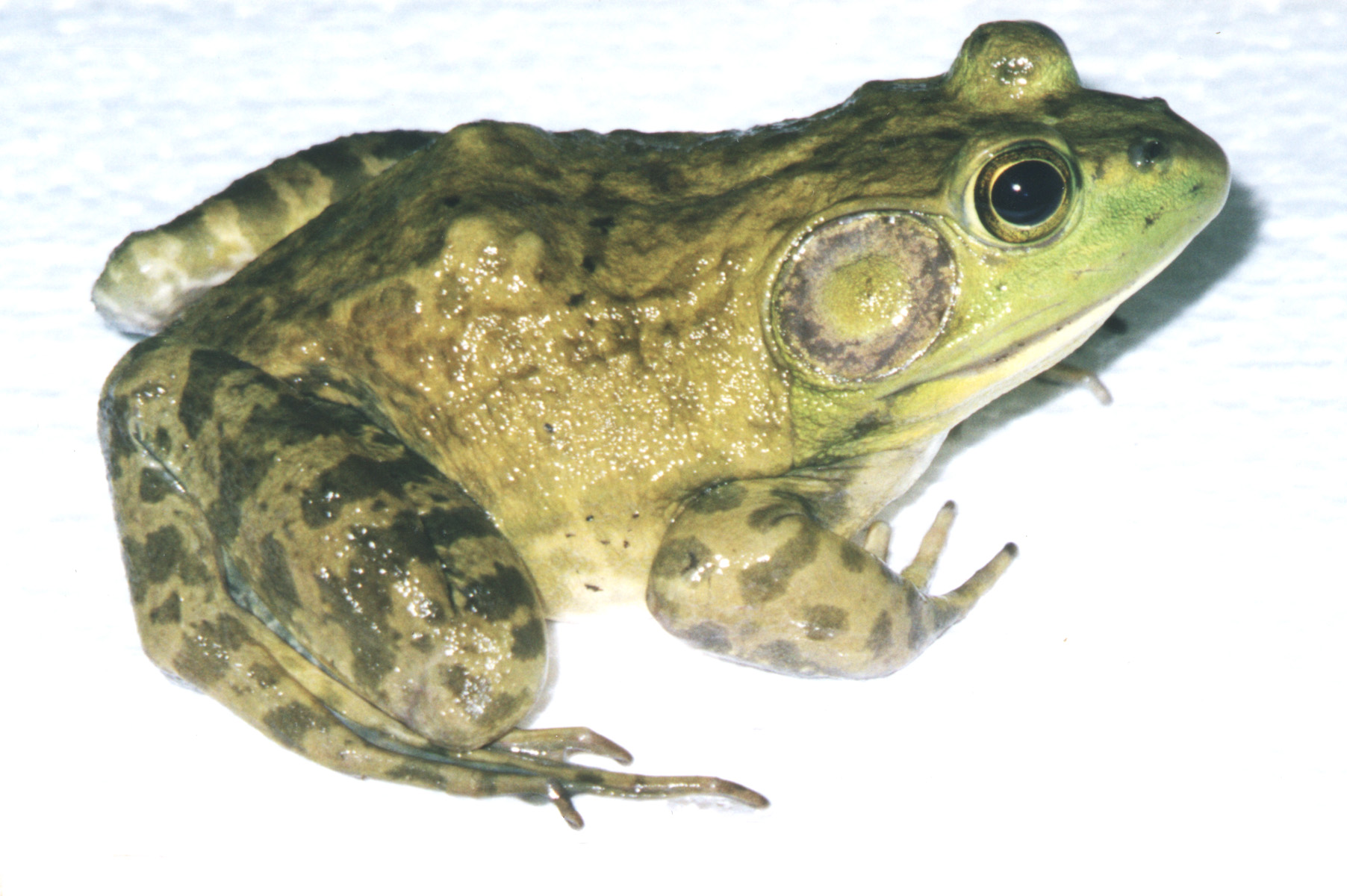For Immediate Release
Study indicates certain rules underlie calling behavior of bullfrogs
Calling by male bullfrogs may be elicited by calls of distant neighbors or even inhibited by calls of neighbors close by, say researchers at Brown and the University of Rhode Island.
PROVIDENCE, R.I. — During a bullfrog chorus, males pay attention to calls from around a pond but are more likely to answer their most distant neighbors.
 This first rule of bullfrog calling behavior comes from a new study of the
animals. It adds to a growing body of evidence that certain rules or strategies,
which are to some extent both competitive and cooperative, govern the calling
behavior of frogs.
This first rule of bullfrog calling behavior comes from a new study of the
animals. It adds to a growing body of evidence that certain rules or strategies,
which are to some extent both competitive and cooperative, govern the calling
behavior of frogs.
The study suggests that calling by male bullfrogs may be elicited by calls of distant neighbors, or even inhibited by calls of neighbors close by, said lead investigator Susan Boatright-Horowitz, assistant professor of psychology at the University of Rhode Island. This rule-driven strategy enables male bullfrogs to call and attract females and maintain territories, yet conserve energy, she said.
Conducted in Rhode Island wetlands, the study was published in the journal Ethology last August.
Male bullfrogs use advertisement calls to get females to cross a pond to breed. By homing in on calls, female bullfrogs will travel significant distances to find males. Calling is physically draining, requiring more energy than any other activity of a male bullfrog. In addition, calling clues predators, such as raccoons or turtles, to a frog’s location.
During a chorus of male bullfrogs, individual males will keep track of who calls, said co-author Andrea Simmons, professor of psychology and neuroscience at Brown. The study suggests that males form stable territories, and may recognize their neighbors, either by acoustic or spatial knowledge of their environment.
“A male must keep track of females and other males in the area, but it also doesn’t need to put itself at any further risk from competitors or predators,” Simmons said. “A bullfrog doesn’t need to waste energy calling to another male if it already knows it is present, especially if the territorial boundaries are obeyed. So a male bullfrog will call just enough to get a female to cross the pond and to remind the other males where it is, so it doesn’t lose its territory.”
The researchers also found that frogs actively calling one night may be quiet the next. “In some sense, they take turns being leader of the band,” Simmons said.
Bullfrogs are aggressive animals, with pond-edge fights breaking out regularly, said co-author Seth Horowitz, Brown neuroscience investigator and psychology research associate. The animals may regulate their calls as a way to avoid aggression, which disrupts breeding opportunities and could get them seriously injured.
“When bullfrogs fight, their advertisement calls change to aggression calls,” Horowitz said. “Females will hear this and will no longer be attracted to mating with the males. The males take their competition for females very seriously.”
To limit the possibility of getting injured in such a fight, some male frogs lie low and keep mum when another male is nearby, a breeding behavior called “satelliting,” Horowitz said.
“Satelliting occurs when a non-calling male positions himself near a calling male and intercepts the female as she approaches the caller,” he said. “This lets males have the chance to breed without challenging other males or announcing their location to predators.”
In the study, the researchers found that a male who is a caller one night may become a satellite the next night. “Once again, it’s as if they are taking turns,” Simmons said.
The study was an offshoot of Simmons’ other research on the physiological mechanisms underlying acoustical communications. That work includes research on the auditory system of frogs, which, like humans, are very dependent upon their hearing.
While the research trio worked a swamp edge, Boatright-Horowitz discovered she could predict which males would call next. She designed the study to determine a calling pattern.
“The density of bullfrogs was such that it was easy to identify individuals,” Boatright-Horowitz said. “We were able to tag each individual in the chorus, using a combination of location and sound cues, and we achieved reliability quickly and easily.”
The presence of frogs indicates that a wetland is healthy ecologically. “The study contributes to the knowledge of how bullfrogs behave in their natural environment,” she said. “Understanding the breeding behavior of an animal puts people in a better position to protect it.”
######

